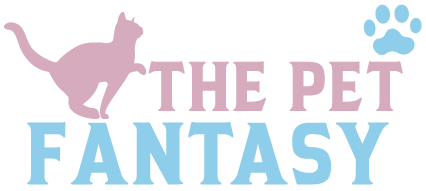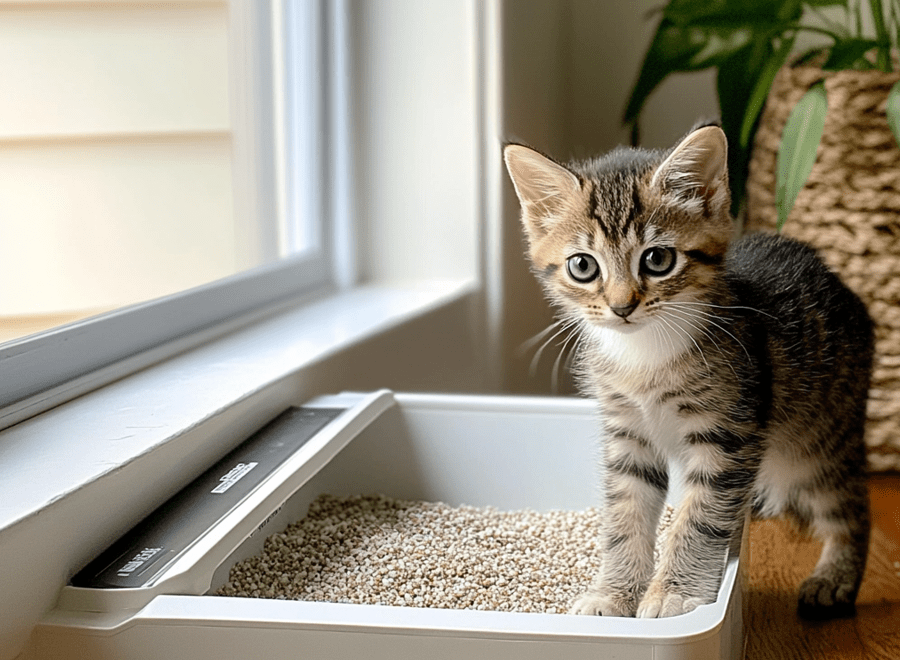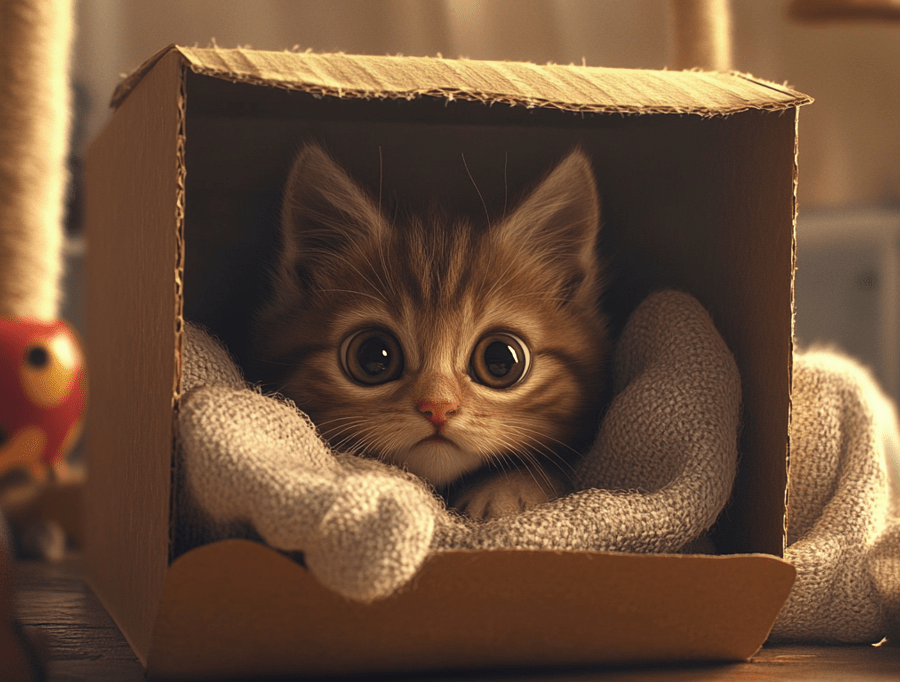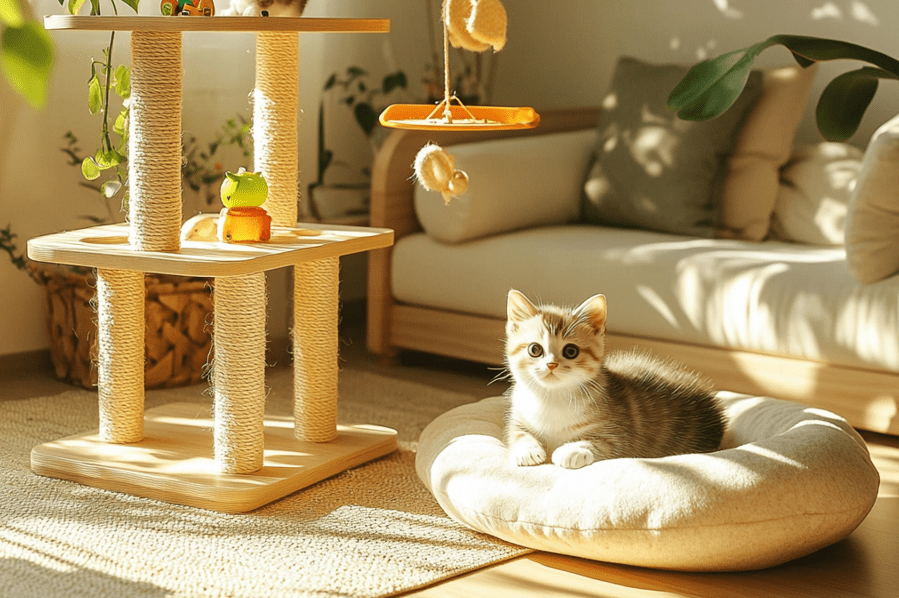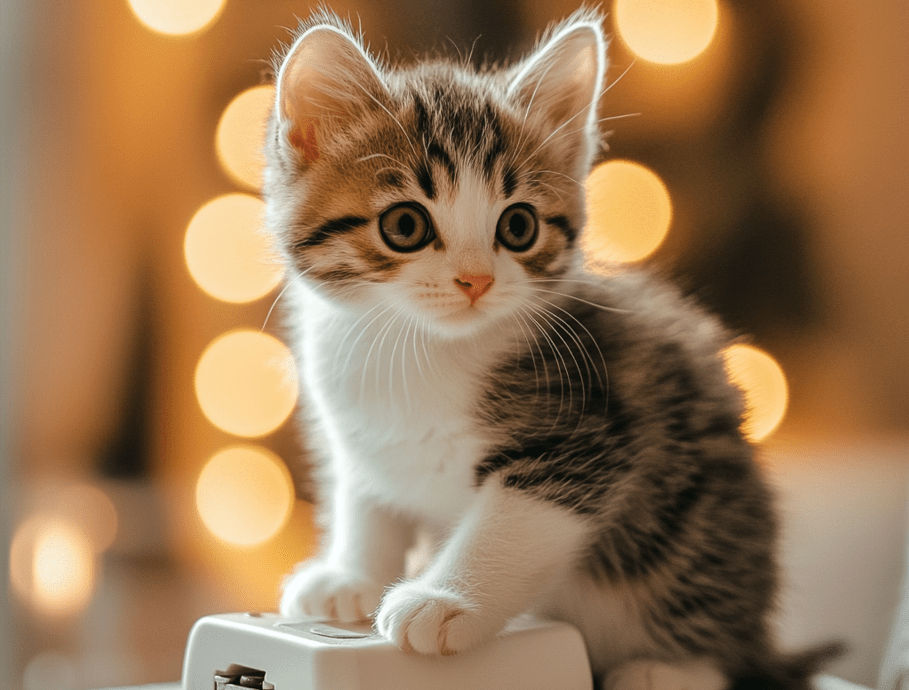
The fact remains that healthy cats are independent animals, do not have a great need to please any given human, and that is just the way it is. Nevertheless, they have considerable brains and are capable of learning all kinds of behaviors, particularly when inspired by appealing incentives. This is the fundamental of how kitten clicker training should be done.
To watch the summary of this article, just watch this video-
What is Kitten Clicker Training?
Kitten clicker training is really a simple and straightforward way to shape a cats behavior. This type of training is used by utilizing a small plastic clicker and it is saying that clicking the device is constructive conduct. Whenever the kitten hears a clicker, it is responded to by an immediate small bite of something good (the treat), which rewards its correct behavior.
A click and reward is the base of kitten clicker training. This training method helps the kitten to match actions with desirable results, and therefore aids in learning what appropriate behaviors are.
What is a Clicker?
A typical clicker is a small plastic tool you will grasp effortlessly in your hand, also with a steel tabbed top edge that when pushed rapidly gives a “click” sound. Traditional Clickers are Harsh Sounding to Felines. Some cats may be scared by the loud noise of traditional clickers. Therefore you can buy clickers that emit less harsh sounds, and therefore be more attractive to some sort of cats.
Clicker training allows you to quickly teach your cat a variety of behaviors, from the basics like “sit” and “stay” to fun tricks such as “wave” and “fetch.”
Why Clicker Train A Kitten?
Consistency: A clicker creates the same sound every time, and this consistent noise provides a clear indication to the kitten. The clicker serves as a mechanical cue, allowing the cat to understand better what behavior is being rewarded––unlike a human voice box which can be higher or lower in tone and pitch due to emotions or other circumstances.
Instant Auditory Feedback: The click that you hear lets you know in an instant. This nearness to the click causes the kitten to link it with the rewarding behavior they just exhibited, that makes it a more effective approach.
Attention-Grabbing: A voice command may not always be as successful as a clicker as when it comes to grabbing the attention of your kitten the way that you need them to. kitten are training their way to the sound and not necessarily you because they probably would rather chase something else.
Selecting Treat for Clicker Train a Kitten

Nutritious and Attractive: Go with some tasteful treats which are healthy too. Pay attention to the best options available and choose one well suited for your cat in order to be interested in learning.
Easy to hold and eat: Select those treats that are easy to grab and bite-sized for your kitten. The best treats will be small and soft so you can reward often without interrupting your training flow.
Look at Caloric Intake: Think about your kitten’s diet. You can take part of their normal kibble and use it as training treats so you are rewarding them without adding lots of extra calories into their diet.
Variety: Every now and then you might want to change up your treats in order for your kitten not to get too bored. Playing around with different options will help you to find what works the best for your cat.
With these and also a positive reinforcement clicker training method you can simply make your cat enjoy the training!
How does clicker training work?
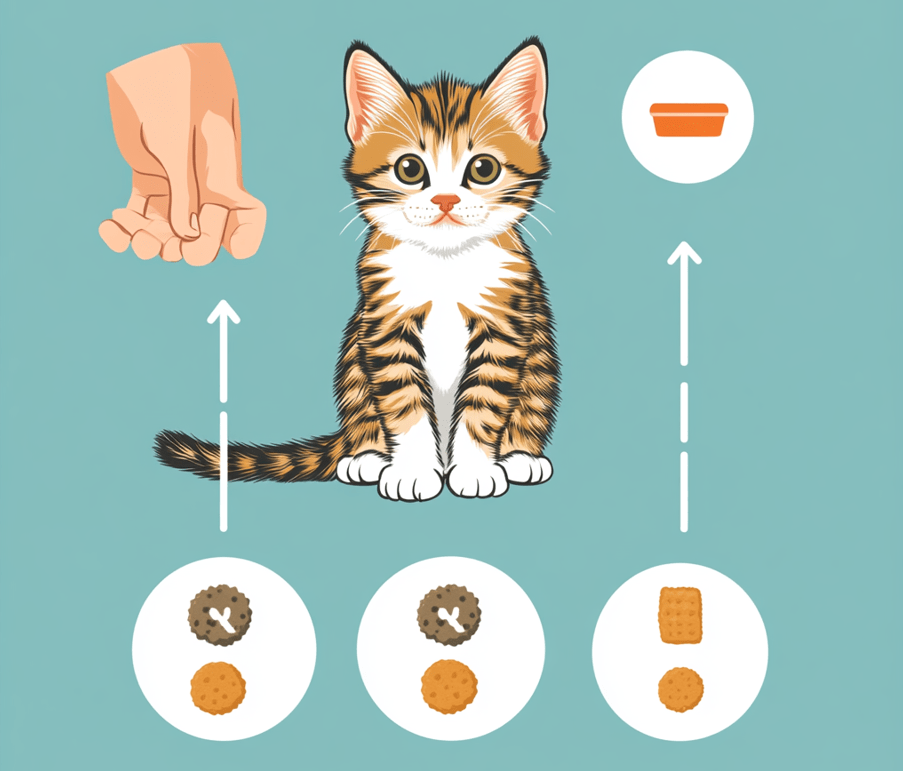
This kind of kitten clicker training is built around the idea that you are using positive reinforcement. First, have a treat on hand so that when you kitten has done what you requested of them, click the clicker and then immediately give them a reward. You just repeat this process and your cat will start to learn that the click sound means a reward is coming. When this connection is achieved, start introducing target training.
Place a target stick near your kitten and let your cat sniff it. Then the moment they do so, click and reward them. Begin moving the target further and further away to get your cat to follow. When your cat begins to approach the target consistently, add a verbal cue (such as “sniff”) only after a few uses. Over time with repetition your kitten will soon be responding to the verbal cue alone, so you can start phasing out using a clicker & lessening the need for treats.
Is It Possible to Train Without a Clicker?
Absolutely! If you do not have a clicker, you can use a clickable pen, tongue-click or even just say the word ‘yes’. While trainers frequently use clickers, any novel sound can be very successful, as long as it is used consistently. If you do not have one of these, there are many kitten clicker apps available for download on your phone.
Clicker Training for Kitten: The Beginner’s Guide in Easy Steps
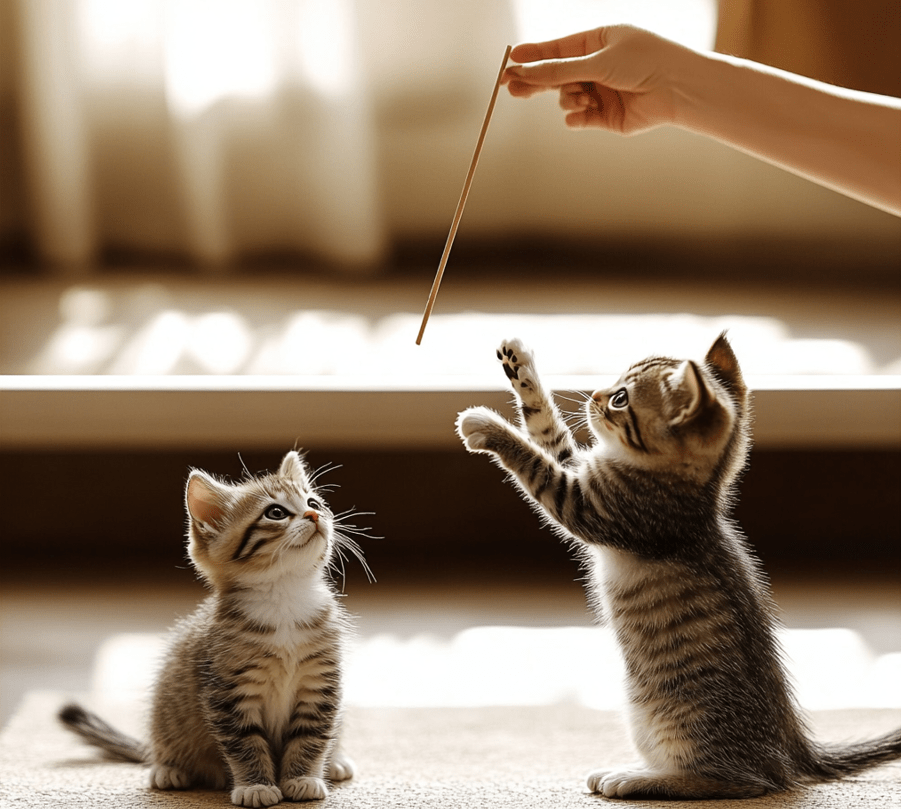
You want to start off with a bite that your kitten loves the most. (Good options include cut up boneless fresh chicken into tiny cubes, tuna fish bits and regular commercial cat treats or even meat-flavored baby food) No matter what the treat is, it should be of a size which your kitten can chew and swallow quickly so they remain focused on what they are doing.
How to Get Your Cat Started Clicker Training
Cats do not have the long attention span that dogs do, so keep your training sessions quick (just a couple minutes at a time). Your kitten will get the hang of it after a few sessions.
- Give your kitten the opportunity to sit down by offering them a cup of treats, which you can keep nearby.
- Tap the clicker, and then offer your cat a treat straight away.
- Repeat the process at random times and as long as your cat is interested.
- Eventually, your kitten will come to believe that the click signals a treat, and may even start eyeing up treats when it hears the click rather than staring at the clicker.
Behavioral Training Using a Clicker
After your kitten has made the association between the sound of the clicker and getting a treat, you can now train her on some basic commands such as “sit.”
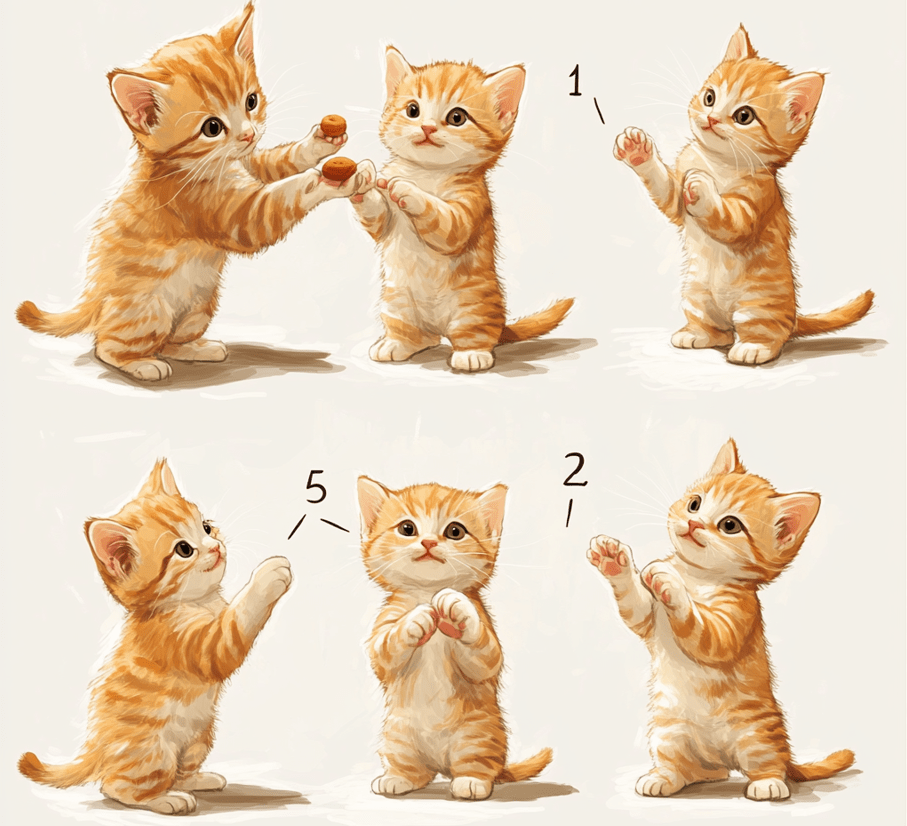
- Start by making sure that your kitten is paying attention. Hold the treat near to your kitten’s nose with one hand and in the other, hold the clicker.
- When your kitten starts to smell the treat, gently lead it in an arch from the muzzle to just above her head. Most cats will follow that movement with their eyes and while they do that, have their head move up and at the same time, allow drawing the bottom down on to the floor.
- As soon as your kitten sits down, click and treat him. Reinforcing the appropriate behavior timely is necessary.
- We can repeat this number of times during the session to build in the behavior.
Clicker Training Tips and Tricks
Teaching a Food Obsessed kitten
Some kittens will try and swipe the treats right out of your hand when being called. Teach these guys to touch a target stick instead after your kitten figures out that he will be rewarded for touching his nose to the stick, you can use it to lure him into doing other behaviors.
Finding the Best Reward
You will need to use a prize that your cat is not used to, because many kittens may not have done any training. You can do this by giving him a little piece of tuna or a favorite snack. Play is definitely not the way to go for a kitty burger motivated cat, but catching some prey with magnetic toys can easily distract them long enough.
Motivating Your Cat with Each Reward
Perhaps your kitten appears to turn up his head at treat based training but this is probably because he has access to food around the clock. In cases like this you may want to give your kitten regular meal times; do some training before feeding, so they are more motivated for treats.
In this case, however, your kitten might not understand what you are trying to show him to do and there is also no response or change in behavior. Make the rewards easy to get and slowly push him toward doing more challenging things. You can reward your cat sniffing your hand before you even try teaching him to sit.
Teaching multiple cats with clicker training

You can really clicker train multiple kittens, even at the same time! You will not have to isolate your kitten for training sessions as they can distinguish when the click is intended for them and when it is not. But if the cats are competing for treats, it might be better to train them separately.
Positive Reinforcement and Reducing Bad Behavior
Use the clicker to teach your kitten virtually anything from sitting, staying, and targeting (it is always a positive thing to start teaching) Also for some fun, you could also train your cat to find, wave or jump a hoop they can be carried as well which will help with encouraging them their carrier. However, when dealing with inappropriate behavior in cats, it does require a comprehensive approach to define what is expected and what is not.
Key Principles for Training Your Cat with a Clicker
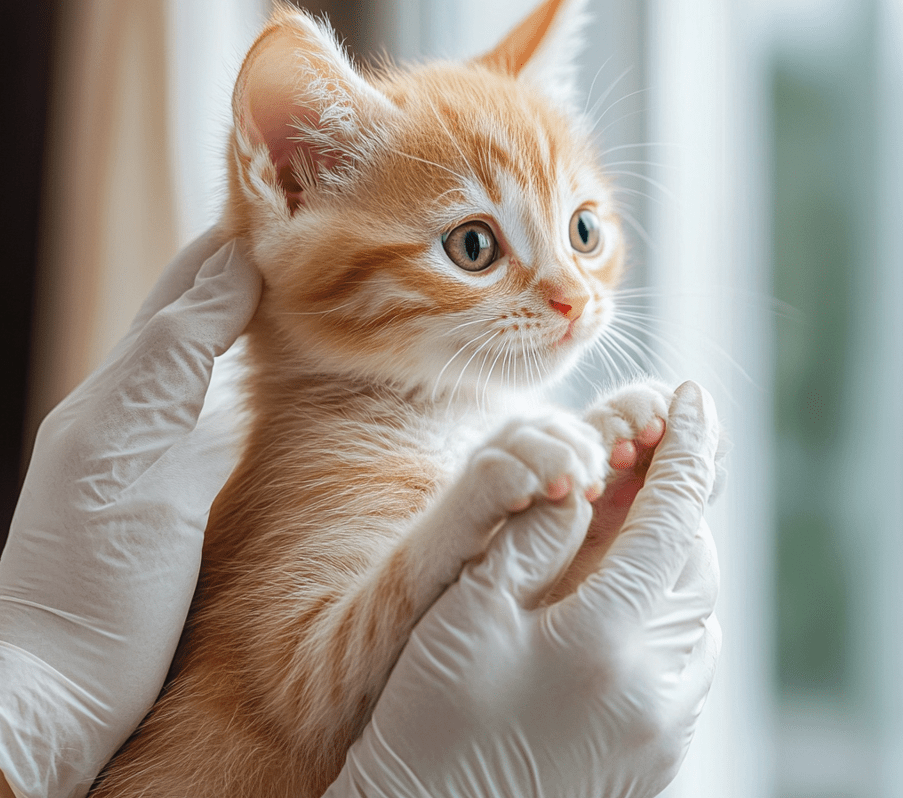
- The first thing that we need to do is make sure your kitten will respond to the clicking sound of a clicker. Not all cats will react to the warmth or noise, so you will want to see how your cat likes it.
- Even if the click was late, you must give a treat every single time. By doing this you are cementing the relationship of sound with reward in your kitten mind.
- Use highly appealing treats. If, however, your kitten is not training it may simply be that the reward is just not enticing enough for it. Do something to grab their attention, try with another treat than the one for a reasonable cause.
- During the click-treat routine, try not to talk as this may cause confusion. That is the only sound your kitten should listen to when you are training him.
